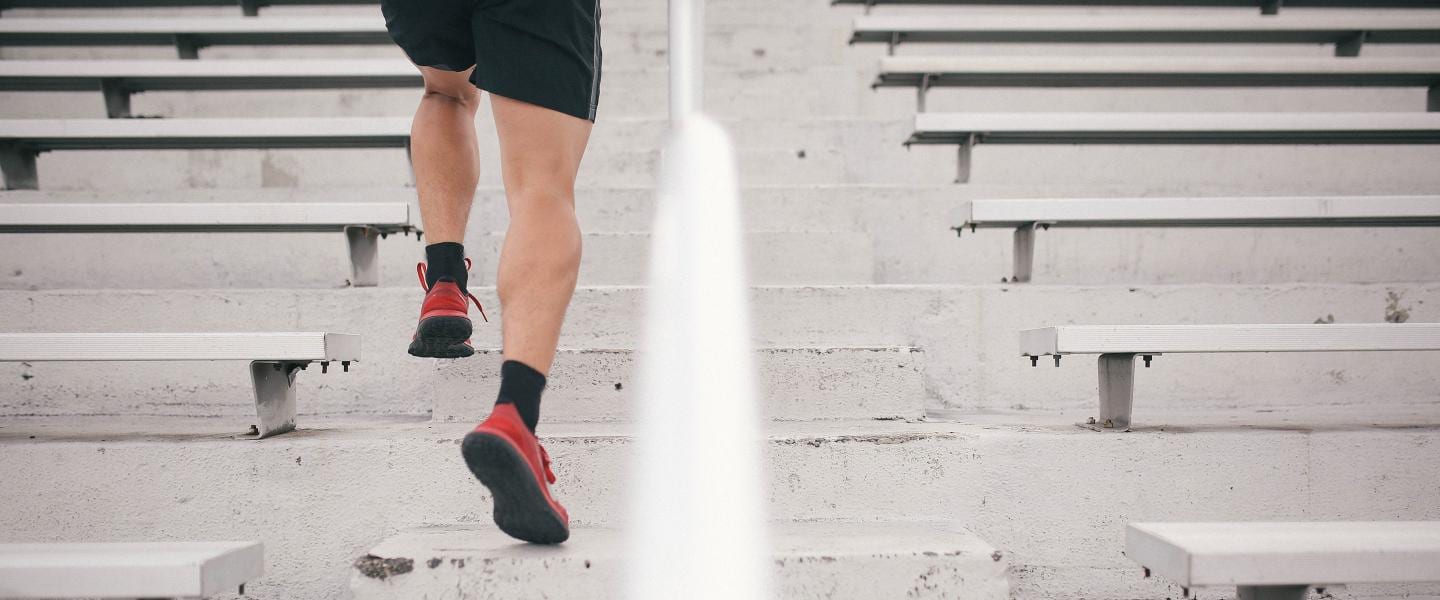Yoga and Sleep
Yoga is a form of meditative movement that combines attentiveness and focused breathing with physical exercise. The practice began over 3,000 years ago and is grounded in Indian philosophy , however there are many schools or types of yoga. Each variation emphasizes different postures or exercises, breathing techniques, and meditation practices.
There are many positive effects yoga can have on wellness , including improved mental and emotional health and stress, relief of some types of pain, weight loss, and improved sleep. This article focuses on the relationship between yoga and better sleep.
Does Yoga Help You Sleep?
Over 55% of yoga practitioners report improved sleep and over 85% report reduced stress. Many studies demonstrate that yoga can improve sleep for a variety of different populations. These studies typically focus on one’s quality of sleep rather than the quantity, as increased amounts of sleep do not necessarily correlate with quality sleep and overall wellbeing. While the definition of quality sleep varies among sleepers, it usually includes feeling energized for the day and a lack of disturbances.
Who Sleeps Better With Yoga?
Yoga has been shown to help benefit all age ranges and improve sleep. From children to the elderly, yoga provides numerous health and sleep benefits.
For instance, sleep disorders are common among children with Autism Spectrum Disorder . Yoga as a behavior intervention can lessen stress for children with ASD and improve their mental health, which can help with sleeping difficulties. It can also help parents and subsequently the well-being of the whole family.
Adult women in particular often have more difficulty sleeping than men. Studies have demonstrated that yoga can benefit many subpopulations of women. For example, pregnant women who practice yoga have reduced sleep disturbances in addition to reduced prenatal anxiety and depression. Women in menopause who practice yoga have also found similar outcomes; they have improved sleep and reduced depression and anxiety .
Elderly populations also often report having sleep disturbances. These disturbances range from snoring to insomnia to restless leg syndrome (RLS), which can affect one’s overall quality of life. Preliminary research has shown that elderly people who do yoga regularly have both improved quality of sleep and improved overall quality of life .
How Often Do You Need to Practice Yoga to Improve Sleep?
Occasional yoga practice will likely improve sleep quality more than no practice at all. However, regular, long-term practitioners experience better sleep quality .
If you aim to use yoga as a tool to improve your sleep, consider making a schedule where you regularly practice. This may include attending classes weekly, designating a certain time of day to practice at home, or a combination of both.
How Yoga Helps You Sleep
There are many ways that yoga can help improve the quality of sleep:
- Mindfulness: This is a practice of judgment-free awareness in the moment. Mindfulness is a common component of many types of yoga. Mindfulness can increase melatonin levels and reduce nighttime sleep disturbances in adults.
- Breathing awareness and regulation: These are also elements of yoga. Deep breathing is a relaxation technique that can induce sleep.
- Regular exercise: Frequent movement is an important element of sleep hygiene. Moderate exercise several times a week can improve overall sleep.
- Weight loss: While weight loss may not be the primary goal for some yoga practitioners, losing weight can have positive effects on sleep. Weight loss can reduce or eliminate a variety of sleep problems, such as sleep apnea.
There are also particular sleep disorders that can be positively impacted by regular yoga practice.
Yoga and Insomnia
Insomnia is the inability to fall asleep or stay asleep. Insomnia can have many long-term effects, including daytime sleepiness and impairment, memory loss, and mood changes. Studies have demonstrated that yoga can be beneficial in managing sleep problems such as insomnia. Yoga can especially benefit particular groups of people with insomnia, such as postmenopausal women and women with breast cancer.
Yoga and Restless Leg Syndrome (RLS)
Restless leg syndrome (RLS) is a compulsion to move the legs that is often unpleasant or even painful. This urge frequently happens during periods of inactivity, such as nighttime. RLS affects women more than men.
In a pilot study of women with RLS, after just eight weeks of yoga classes, their RLS symptoms were significantly alleviated. Sleep, stress, and overall mood were much improved as well. While further study is needed, these results suggest that yoga is a positive tool to improve sleep in patients with RLS.

What Types of Yoga Help You Sleep?
There are many types of yoga that provide health and wellness benefits. During the day, any type of yoga practice is appropriate, so long as the user is comfortable. High-activity forms of yoga, such as vinyasa or hot yoga, are a good type of moderate to high exercise. Such exercise, when done at least several hours before bedtime, can help you sleep better at night.
Since high-activity yoga forms elevate the heart rate, it’s best to avoid these practices right before bedtime. People who wish to practice yoga nearer to bedtime will find a slower and restorative type of yoga more suitable:
- Hatha yoga involves gentle body postures and breathing techniques . These breathing techniques focus on lengthening inhalation, holding the breath, and exhalation.
- Nidra yoga is done while lying down and focuses on breathing or perception of certain parts of the body .
What Yoga Poses Should You Do Before Bedtime?
Poses done before bedtime should encourage the body to relax and sleep. Recommendations among yoga instructors and physicians vary, but the following poses are commonly suggested:
- Standing forward bend (uttanasana): From a standing position, bend your torso slowly forward in front of your legs. Your hands can rest on your elbows, shins, or the floor.
- Reclined butterfly (supta baddha konasana): Lie on your back. Press the soles of your feet together and let your knees fall to the side. You can have your hands at your sides or above your head.
- Legs up the wall (viparita karani): Lie on your back with your legs against a wall so that your body makes an “L.” Relax your arms at your sides.
- Corpse pose (savasana): This is often the closing pose of yoga practices. Lie on the floor with your arms at your sides, palms up, and your legs straight.
Keep in mind that the sleep environment should primarily be used for sleeping; find another quiet location to do your yoga poses before you go to sleep. Be sure you are in a safe space free of any potential hazards.
If you have any concerns about your yoga practice, consult a yoga instructor and/or a physician. Remember that yoga is not a substitute for medical treatment. In the event of persistent sleep disturbances or other concerns, consult your physician to develop a treatment plan.

Still have questions? Ask our community!
Join our Sleep Care Community — a trusted hub of sleep health professionals, product specialists, and people just like you. Whether you need expert sleep advice for your insomnia or you’re searching for the perfect mattress, we’ve got you covered. Get personalized guidance from the experts who know sleep best.
References
17 Sources
-
Büssing, A., Michalsen, A., Khalsa, S. B., Telles, S., & Sherman, K. J. (2012). Effects of yoga on mental and physical health: a short summary of reviews. Evidence-based complementary and alternative medicine : eCAM, 2012, 165410.
https://pubmed.ncbi.nlm.nih.gov/23008738/ -
National Center for Complementary and Integrative Health. (2019, May). Yoga: What You Need To Know., Retrieved January 11, 2021, from
https://www.nccih.nih.gov/health/yoga-what-you-need-to-know -
Stussman BJ, Black LI, Barnes PM, Clarke TC, Nahin RL. Wellness-related use of common complementary health approaches among adults: United States, 2012. National health statistics reports; no 85. Hyattsville, MD: National Center for Health Statistics. 2015., Retrieved January 11, 2021, from
https://www.cdc.gov/nchs/data/nhsr/nhsr085.pdf -
Cohen, S., Conduit, R., Lockley, S. W., Rajaratnam, S. M., & Cornish, K. M. (2014). The relationship between sleep and behavior in autism spectrum disorder (ASD): a review. Journal of neurodevelopmental disorders, 6(1), 44.
https://pubmed.ncbi.nlm.nih.gov/25530819/ -
Narasingharao, K., Pradhan, B., & Navaneetham, J. (2016). Sleep Disorder, Gastrointestinal Problems and Behaviour Problems Seen in Autism Spectrum Disorder Children and Yoga as Therapy: A Descriptive Review. Journal of clinical and diagnostic research: JCDR, 10(11), VE01–VE03.
https://pubmed.ncbi.nlm.nih.gov/28050484/ -
Field, T., Diego, M., Delgado, J., & Medina, L. (2013). Tai chi/yoga reduces prenatal depression, anxiety and sleep disturbances. Complementary therapies in clinical practice, 19(1), 6–10.
https://pubmed.ncbi.nlm.nih.gov/23337557/ -
Lu, X., Liu, L., & Yuan, R. (2020). Effect of the Information Support Method Combined with Yoga Exercise on the Depression, Anxiety, and Sleep Quality of Menopausal Women. Psychiatria Danubina, 32(3-4), 380–388.
http://www.psychiatria-danubina.com/UserDocsImages/pdf/dnb_vol32_no3-4/dnb_vol32_no3-4_380.pdf -
Hariprasad, V. R., Sivakumar, P. T., Koparde, V., Varambally, S., Thirthalli, J., Varghese, M., Basavaraddi, I. V., & Gangadhar, B. N. (2013). Effects of yoga intervention on sleep and quality-of-life in elderly: A randomized controlled trial. Indian journal of psychiatry, 55(Suppl 3), S364–S368.
https://pubmed.ncbi.nlm.nih.gov/24049200/ -
Bankar, M. A., Chaudhari, S. K., & Chaudhari, K. D. (2013). Impact of long term Yoga practice on sleep quality and quality of life in the elderly. Journal of Ayurveda and integrative medicine, 4(1), 28–32.
https://pubmed.ncbi.nlm.nih.gov/23741159/ -
Vera, F. M., Manzaneque, J. M., Maldonado, E. F., Carranque, G. A., Rodriguez, F. M., Blanca, M. J., & Morell, M. (2009). Subjective Sleep Quality and hormonal modulation in long-term yoga practitioners. Biological psychology, 81(3), 164–168.
https://linkinghub.elsevier.com/retrieve/pii/S0301051109000726 -
Zeichner, S. B., Zeichner, R. L., Gogineni, K., Shatil, S., & Ioachimescu, O. (2017). Cognitive Behavioral Therapy for Insomnia, Mindfulness, and Yoga in Patients With Breast Cancer with Sleep Disturbance: A Literature Review. Breast cancer : basic and clinical research, 11, 1178223417745564.
https://pubmed.ncbi.nlm.nih.gov/29434470/ -
Black, D. S., O’Reilly, G. A., Olmstead, R., Breen, E. C., & Irwin, M. R. (2015). Mindfulness meditation and improvement in sleep quality and daytime impairment among older adults with sleep disturbances: A randomized clinical trial. JAMA Internal Medicine, 175(4), 494–501.
https://pubmed.ncbi.nlm.nih.gov/25686304/ -
Wang, W. L., Chen, K. H., Pan, Y. C., Yang, S. N., & Chan, Y. Y. (2020). The effect of yoga on sleep quality and insomnia in women with sleep problems: a systematic review and meta-analysis. BMC psychiatry, 20(1), 195.
https://pubmed.ncbi.nlm.nih.gov/32357858/ -
Afonso, R. F., Hachul, H., Kozasa, E. H., Oliveira, D., Goto, V., Rodrigues, D., Tufik, S., & Leite, J. R. (2012). Yoga decreases insomnia in postmenopausal women: a randomized clinical trial. Menopause (New York, N.Y.), 19(2), 186–193.
https://journals.lww.com/00042192-201202000-00013 -
Innes, K. E., Selfe, T. K., Agarwal, P., Williams, K., & Flack, K. L. (2013). Efficacy of an eight-week yoga intervention on symptoms of restless legs syndrome (RLS): a pilot study. Journal of alternative and complementary medicine (New York, N.Y.), 19(6), 527–535.
https://pubmed.ncbi.nlm.nih.gov/23270319/ -
Woodyard C. (2011). Exploring the therapeutic effects of yoga and its ability to increase quality of life. International Journal of Yoga, 4(2), 49–54.
https://pubmed.ncbi.nlm.nih.gov/22022122/ -
Moszeik, E.N., von Oertzen, T. & Renner, KH. Effectiveness of a short Yoga Nidra meditation on stress, sleep, and well-being in a large and diverse sample. Curr Psychol (2020).
https://link.springer.com/10.1007/s12144-020-01042-2








